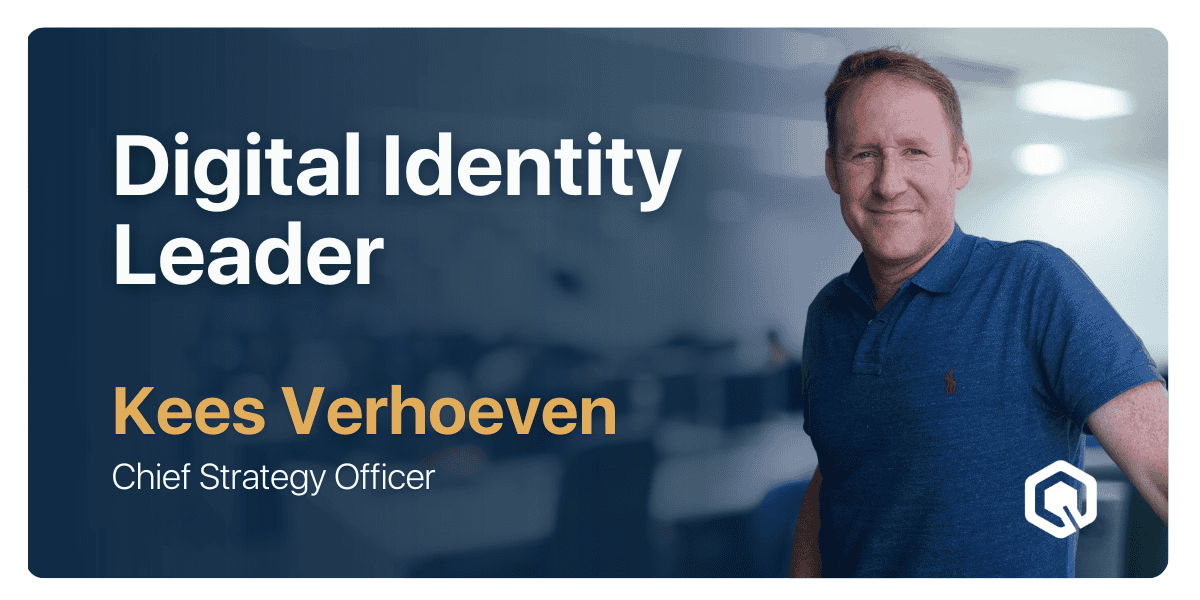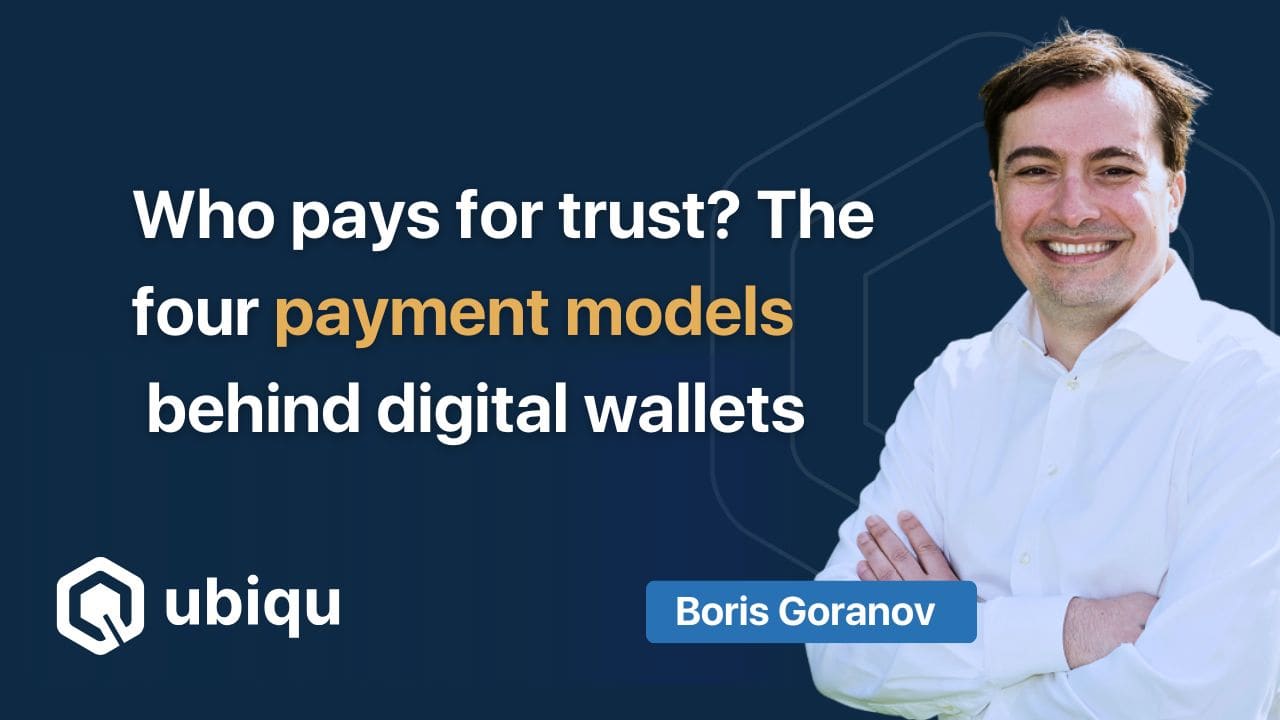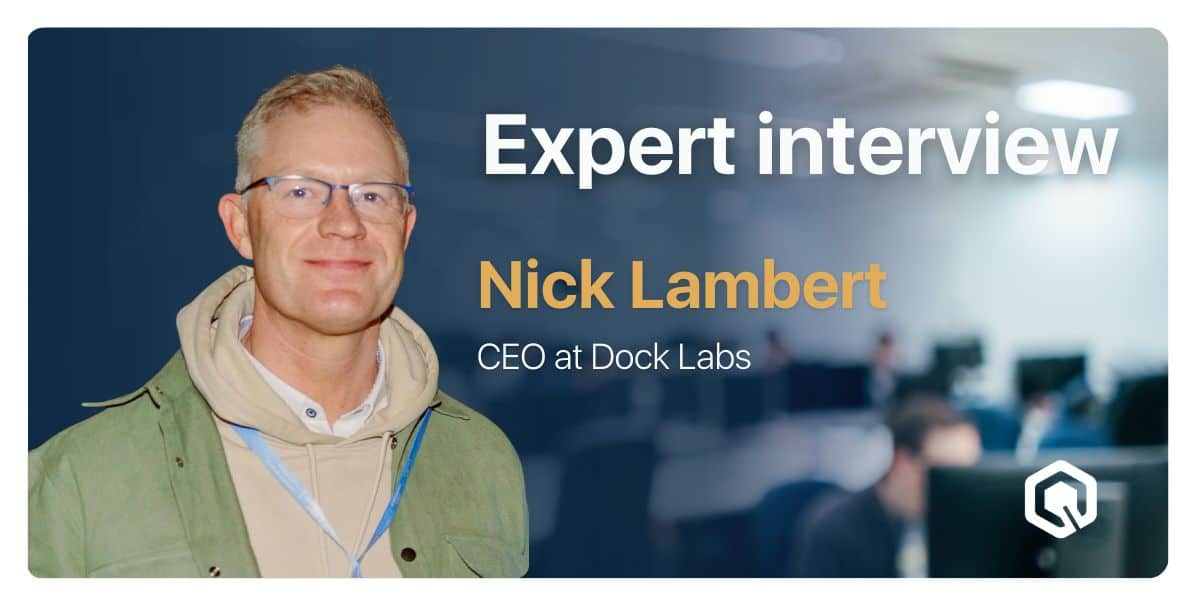“We’re not building a database with digital identities from Europeans. We’re putting the power in hands of the individual,” Kees Verhoeven explains. A former politician who now focuses on ensuring technology serves people and society, he speaks with conviction about Europe’s ambitious digital identity project. While the continent has long been criticized for prioritizing regulation over innovation, its approach to digital identity could mark a turning point in the global tech landscape.
You’ve been vocal about Europe missing opportunities in tech. Looking at social media, AI, cloud, and digital identities – what’s going wrong with Europe’s technological development?
“The situation has suddenly become very concrete and clear,” Kees begins. “It seems as if we’re being caught off guard by the world. But the truth is, for decades, especially, as Europe, we’ve slowly become weaker in developing and building new innovations and technology.”
He elaborates on the global dynamics: “China is pouring billions into strategic technology development and the United States has many strong companies that are growing like crazy through their capitalist system. And Europe has put far too little against that. We’ve slowly but surely fallen behind. You can see it in the number of scientific citations, patents, and investments in top companies. Europe is lagging behind, and in the long term, we’re becoming vulnerable.”
As a former politician, you’ve made an interesting observation that innovating is more important than regulating. That’s quite a shift from the typical European stance – how do you see this balance?
“Europe has always emphasized protecting human and civil rights,” Kees explains. “We need to regulate, prioritize ethics, ensure that others’ products fit within our frameworks. That has been an understandable attitude. But if you’re only regulating, then you’re actually just the referee while you also want to be the footballer – you want to be the player too.”
He continues with growing intensity: “At some point, I started thinking more and more. We talk about regulating, privacy, AI, cybersecurity – we’re making all these rules as Europe. Dozens of laws. But when it comes to innovation, what are we actually creating? Where are our investments going? What technologies have we developed ourselves? The relationship between legislation and investment has become skewed.”
Given Europe’s strong foundation in research and infrastructure, what concrete steps should we take to unlock this potential?
“We have a lot of resources in-house,” Kees emphasizes. “It’s mainly about unlocking what we have. We have knowledge, fantastic digital infrastructure, many good companies, and great scientists. We just need to take control and ensure that entrepreneurship and innovation become positive leading forces.”
He outlines specific actions: “First, we need to significantly increase capital investment and R&D funding. Pension funds and other private investors should be encouraged to take bigger risks with emerging technologies. We also need to cut red tape for startups and scale-ups. Most importantly, Europe needs to build its own technological infrastructure – whether that’s AI capabilities or social media platforms.”
Let’s talk about eIDAS 2.0, which seems to be a rare case where Europe is taking the lead. How does this regulation fit into the broader picture of European digital sovereignty?
“Digital identity is one area where Europe is determined to take the lead,” Kees says. “With eIDAS 2.0, the EU has mandated that by the end of 2026, every member state must provide citizens with access to digital identity wallets. This means all European citizens will have the right to their own digital identity in the form of a secure digital wallet.”
He emphasizes the practical benefits: “As a citizen, you get full control over your data. Currently, your information is scattered across different organizations – the Tax Service, educational institutions, pension funds, and government agencies. With a wallet, you have all this bundled in one place under your control.”
There seems to be some misconception that eIDAS 2.0 is about creating a central European database. Having been in politics, how would you explain what it really means for citizens?
“It’s actually the complete opposite,” Kees says emphatically. “The EU’s vision is to put citizens in control of their own data through personal digital wallets. Think of it as a secure app on your phone that lets you share specific pieces of your information only when and where you need to.”
He illustrates this with an everyday example: “Right now, when you check into a hotel, you typically have to hand over a copy of your passport – giving them access to all your personal details, most of which they don’t actually need. This creates unnecessary risks and can lead to identity theft. With a digital wallet, you can simply verify your identity without exposing excess personal information. The same applies when buying age-restricted products – you can prove you’re over 18 without revealing your gender, or any other private details.”
With your experience in politics and now working with businesses, what advice would you give European governments as they approach this digital transformation?
“Work together with the market,” Kees states emphatically. “Almost everyone in government wants to improve things, but they like control and find it exciting to let go. The Ministry of Economic Affairs is used to working with the market, but other ministries often see it as difficult. We need openness and collaboration between education, research, government, and enterprise – we need to bring these forces together.”
You’ve seen both the public and private sector approaches. What’s holding European governments back from embracing innovative solutions like digital wallets?
“The challenges often come down to procurement,” Kees explains. “A government can choose to build or buy. When they buy through tenders, these processes are often bureaucratic and have high thresholds for small parties. They set requirements for revenue or proven track records. A company like Philips has it much easier than a party that has come very quickly with a new product but can’t say ‘we’ve been doing this for five years.’”
He draws an interesting comparison with other markets: “In America, they just say ‘okay, here you have billions, go ahead and make something of it.’ If you go bankrupt, well, that’s unfortunate – I’m exaggerating a bit now. But they are much more patient with venture capital. They dare to spend money and wait longer for results. In Europe, we set short-term requirements. Everything needs to be arranged immediately. Whoever fits these requirements wins the contract. But then you never get that innovation.”
There’s often talk about Europe’s market being fragmented compared to the US. How do you see digital wallets helping to solve this challenge?
“We simply don’t have a market of 300 million Americans,” Kees acknowledges. “Instead, we have 400 million Europeans spread across 21 EU member states. That’s our limitation. But look at our history – we’ve had a gigantic leading auto industry. We still have fantastic companies that are conquering the world – think of ASML, think of Brainport Eindhoven and all the photonics development happening there.”
He connects this to the wallet opportunity: “If you can smooth out that internal market, if you can improve it, make it more accessible through the wallet because transactions become much easier, I think you could take a big step. The strength of Europe is very much these 400 million consumers who are reasonably prosperous. But unlocking it can become easier, and the wallet can really play a role in that.”
With 2026 as the deadline for implementing these wallets, there’s a risk that governments might turn to Big Tech for solutions. How can we prevent this?
“There’s a tendency for governments to say ‘okay in 2026 we all need to have such a wallet. If you don’t have it, then just let Google or Apple build it.’ Well, we need to prevent that. We’ve said often enough ‘we’ll just let Google, Microsoft or Apple build it.’ We are already dependent in cloud, platforms, software packages, and AI. My point is, let’s for once with these wallets focus on our own technology.”
He draws from his political experience: “During my eleven years in the House of Representatives, we made similar decisions about the Chinese company Huawei in 5G networks and the Russian company Kaspersky in antivirus software. We simply decided to ban those parties and replace them with European alternatives like Ericsson or Nokia. We can make these decisions. But it needs to happen at the European level – the European Commission decides about banning parties and setting requirements.”
Finally, for startups and scale-ups developing innovative solutions in this space, what advice would you give them about working with government and large organizations?
“What I often see is that these companies make super good things – really top-of-the-bill – but there’s a kind of technical-administrative gap,” Kees observes. “The governments, large market parties, and boards of directors don’t understand it all. The technicians completely see it and know how it works, but there’s a distance, a bridge that somehow isn’t being built.”
His advice is practical: “Make your product as concrete and tangible as possible. Take the wallet for example – people ask ‘What is it? How does it look? It’s in your phone, but how?’ Talk about applications. It’s about health data, age limits, diploma fraud, being able to trade quickly. Make your product applicable, simple, and concrete. That’s what directors, purchasers, and managers need because they don’t have time to completely immerse themselves in your product.”
He concludes optimistically: “I’m sure we have many companies in the Netherlands that can do this, but there are also many companies that the government doesn’t yet know can do that. It’s about bridging that gap between technical capability and practical application.”


